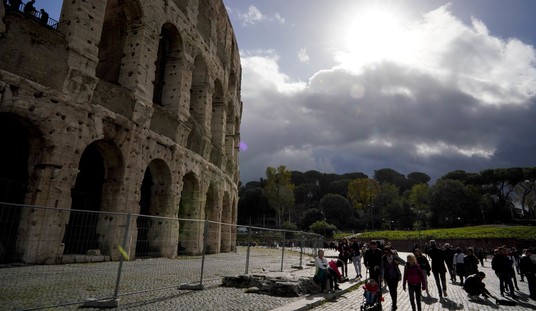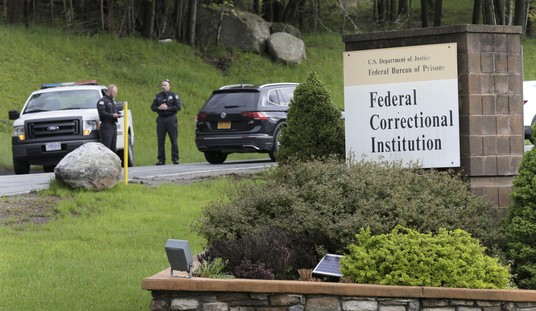The Supreme Court joined in a fight between the ACLU and the federal government over a World War I memorial in the shape of a cross. While neither legal team hit the ball over the fence, the majority seems inclined to save this cross in what will be the first religious liberty case of the new Court.
On Oct. 7, the Supreme Court heard arguments in Salazar v. Buono. This case is a decade-long fight over the so-called Mojave cross, pitting Obama Solicitor General Elena Kagan against the ACLU’s Peter Eliasberg. (This doesn’t mean Barack Obama necessarily wants to protect this cross. His Justice Department has the duty of protecting every federal law, regardless of what he and his staff think of those laws.)
In 1934, the Veterans of Foreign Wars (VFW) erected a cross on Sunrise Rock in the Mojave Desert as a memorial to all those who served in World War I, along with a plaque dedicating it to those servicemen.

This cross in the middle of the desert also happens to be in the middle of a national park. Congress created the Mojave National Preserve in 1994, the land of which includes the cross on Sunrise Rock.
Not surprisingly, the American Civil Liberties Union (ACLU) decided that the war memorial constituted a grave threat to the republic. So they backed a former National Park Service employee, Frank Buono, to bring a lawsuit to have the cross removed.
This lawsuit has gone through four rounds of litigation, at the end of which the U.S. Court of Appeals for the Ninth Circuit (the most liberal federal appellate court, thanks to a heavy concentration of judges appointed by Democratic presidents Jimmy Carter and Bill Clinton) upheld a district court order requiring the cross to be taken down.
Recommended
Then Congress and the Bush administration devised what everyone thought was a solution. The VFW owned a plot of private land adjoining the national park. So the VFW agreed to donate a parcel of land of equal value to the parcel containing the cross, and take the land with the cross in exchange. This would be a land swap deal with no loss to the American taxpayer. The matter seemed solved.
Except that the ACLU doesn’t know how to take “yes” for an answer. They promptly scurried back to federal court and secured a second court order blocking the land transfer, opining that Congress’ move was an effort to evade the court’s earlier order. They did this to keep the cross on government land so that it would have to be destroyed. In so doing, the ACLU showed that their goal all along was not getting the cross off public land; it was instead to level the cross to the ground.
Then the U.S. Supreme Court took this case. Much of the Oct. 7 argument focused on procedural issues and questions of federal jurisdiction. Most of this was about whether Frank Buono had standing to continue this suit in federal court. To have standing, Buono must prove that he has suffered an injury that is traceable to the government and that the Court can remedy. Central to this question is whether the second order blocking the land transfer is part of the original judgment, or instead is a separate legal action.
Kagan’s performance defending the cross was somewhat flat. She missed the mark when Justice Kennedy asked why the government had not raised these jurisdictional issues before, saying that they didn’t think it was important at the time. She also went on a tangent about how the government could post signs saying that this cross is not on public land, until Chief Justice Roberts pointed out that there were no signs in this lawsuit and redirecting her back to the facts of the case. She also may have given away the store in possibly conceding that Buono has standing, when pressed by Justice Sonia Sotomayor.
All this hurts Kagan’s chances of making it to the Supreme Court. She is currently on the short list to replace Justice John Paul Stevens when he retires (which will likely take place next summer). This performance, coming on the heels of a lackluster showing against Ted Olson in September’s campaign finance case Citizens United v. FEC, is creating a pattern of Kagan falling below expectations.
Fortunately for supporters of the cross, however, the ACLU’s Eliasberg—while delivering a solid performance—didn’t outshine Kagan, fumbling a couple issues himself. Chief Justice Roberts rebuked him for saying that the cross’s plaque said nothing about who erected the cross (implying that observers would think it was a government cross), and Roberts pointed out that in fact the plaque says that it was erected by the VFW, giving the local VFW post number and the year.
The hearing got a little combative at times, such as when Eliasberg said that since the cross is a Christian symbol, only Christian soldiers are honored by this memorial. To this, Justice Antonin Scalia responded, “I think that’s an outrageous conclusion.” Scalia also extracted an admission out of Eliasberg that the government has never denied a request from a Jewish, Muslim or other group that sought to erect a war memorial with their respective holy symbols.
It’s difficult to make a prediction on exactly what grounds the Court will decide this case, although it looks like the cross will ultimately survive by a 5-4 divided Court. Justice Samuel Alito signaled what may be the route the majority will take, saying that the sensible way to read the lower court’s order is as only forbidding the cross to be on government land. Therefore transferring the land to private hands (the VFW) would not violate the order. For technical reasons, the Court could also then hold that Buono lacks standing to continue the suit in any event.
If the Court does this, it will dissolve the lower court order blocking the transfer, allowing the cross to continue standing, this time on private land under the watchful care of the same VFW that first raised it in 1934 to honor those who sacrificed for this country.
It’s a sad day in America that we have to wrestle with whether far-left secularists can use the power of our nation’s court as a demolition crew to level crosses to the ground. It’s even sadder that when we do avoid such a disturbing result, we may do so by only a single vote in the U.S. Supreme Court.
























Join the conversation as a VIP Member